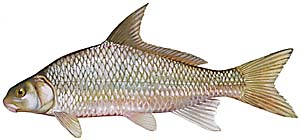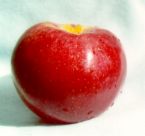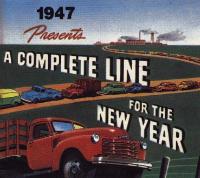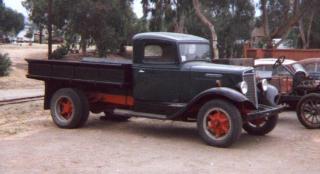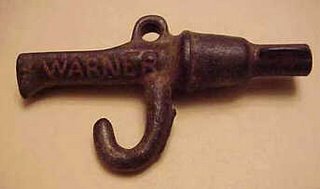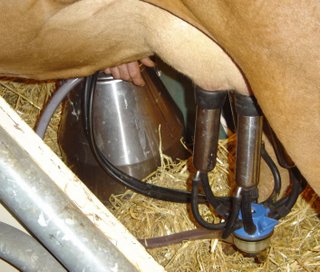



A Wonderful Time Was Enjoyed By All
On my second Christmas vacation while living at the farm, MM and my sister went to the city to my Uncle's home for Christmas, and Dad returned home to spend Christmas Eve and Christmas Day with me in town. We opened our presents to each other and went to my Aunt and Uncle's house for dinner. Then, after spending another night in town, Dad returned me to the farm while he went to retrieve MM and my sister. As we pulled into the barnyard, I immediately noticed things were not normal. To start, there were cars, parents, and kids all over the big yard. It soon became apparent that the cars were dropping off the kids at the farm and that I knew them all. They were all from my class at school. Before I had a chance to ask any questions, Uncle R told me to go and hitch the team to the sled we used to haul logs from the woods. As I went to do this, I passed by the cow barn entrance and saw that there were large number of kids being shown around the cows by F. I figured it must be some church outing as I saw the new young Methodist Minister and his wife there also.
I soon had the team and sled assembled and was just finishing when R came and told me to drive it around to the barnyard and F would tell me what to do. By now I was pretty certain I'd solved the mystery, it WAS a church outing including a horse-drawn sled ride. As I pulled up out front, I could see that the sled had been covered with white canvas and this further cemented my belief in the outing idea. F soon came out of the barn with the Minister, his wife, and about 12-15 of the kids and they all climbed on the sled and found places to sit for the ride. F told me to cross the road to his yard and then follow the little road that lead to our lake cottage to the southwest through the marshy woodlots. As I turned onto the cottage road, I saw that somebody had had the horse powered "snow roller" we used to pack the snow for hauling logs down the road. This, I assumed, had been done for the outing, as we didn't normally pack that road, preferring to use skiis and toboggans to haul ourselves and our equipment to the cottage for ice fishing. But, having decided that a church outing had been arranged, I just accepted it as part of the preparations.
On arriving at the cottage, I found that Mrs F and another lady were already there and had the doors cleared of snow, kerosene lamps lighted, and from the tell-tale smoke, a fire started in the main room wood furnace. I use the word furnace loosely, as it was really just a steel 55 gallon drum on a stand with a metal pan under it and a stove pipe at one end. Uncle R had affixed a hinged door and swivelling vent on the front to allow log loading and airflow adjustment. On the back end he'd made another. smaller door with an old cast iron roaster below it. This was so when the fire was out, a garden hoe could be inserted through the front door and the ashes pushed out the back into the roaster. There was also a fully stocked wood-box beside it to hold more fuel. Although rather crude, it was remarkably efficient in heating the cottage to a nice toasty level of comfort, even allowing for bare feet.
I had little time to see what was happening though, as F told me we had to return at once for another load of kids. The second load was pretty much the same as the first, and we made our way back to the cottage for a second time. This time, however, instead of telling me to go back for the remaining kids, F told me to go in and help Mrs F and the other lady prepare the cottage and he'd take the team and sled back for the rest. As I entered the cottage, my suspicions of a church outing were further confirmed when I saw that the other lady within was Mrs McClure, the Catholic Priest's live-in housekeeper. That there were two churches involved helped explain the number of kids in attendance. As I went for wood for the kitchen stove, I noticed a number of boys in the frozen marsh with axes and bow saws cutting away small dead trees and limbs, and another bunch hauling them out toward the lake. Once I had the stove going and the stovepipe and furnace flues adjusted, I went out the lake end porch door just in time to see R pulling up with a smaller load of kids and a bunch of blankets, pillows, sleeping bags, and small pieces of luggage. Upon seeing me, he called for me to help him unload the sled into the cottage where, I saw upon entering, the two women had moved all the furnishings against the walls of the main room leaving a large clear area. As I was about to deposit my load, the Minister's wife came down the steps from the open loft sleeping area and took some things from me and headed back up the stairway. As we went to the sled for another load I noticed the Minister and a large group of kids had cleared a large half-circle abutting the iced over lake.
They had also placed steel milk bottle carrying cases, which I didn't recall hauling there, in lines of four cases per line and topped them with long two inch by twelve inch planks which I also didn't recall bringing down. At the center of this half-circle, about six feet from the lake ice's edge, they'd built a very neat bonfire pile, having cut the limbs into proper sizes and gathering small dry twigs for kindling. Just as R and I finished unloading everyone's things from the sled, F arrived with his new snow machine with my aunt on behind him and towing two long toboggans loaded with big boxes. I was about to help unload them when F handed me his prized Zippo lighter and some tightly twisted strips of brown paper bags and instructed me to go get the bonfire going for the Minister. This took a bit of time, during which I heard the snow machine leave and glimpsed the sled returning to the barn as well. Just as I was satisfied with the result of my fire lighting prowess, I heard the snow machine return and looked to see, much to my surprise, Uncle R and F both on the thing and returned to the cottage. A quick calculation led me to the obvious, but unbelievable conclusion that, since "the princess" was away for the holidays, the farm was unattended for the first time in my memory. I was still struggling with this new information when my aunt called everyone to the cottage.
As we all arrived I hung back, so as not to insert myself into the church outing R and My aunt were apparently catering. Now I noticed that R and F had brought another group of wooden crates and they were full of skates. Now I was getting a clearer picture of things, it was a church skating party and sleepover. As everyone found their skates and went about putting them on, I noticed for the first time that truly all the kids were in my class at school, all thirty-odd of them. In fact, my entire class seemed present. This didn't surprise me though, as I was busy with chores during Sunday School hours, I assumed they were all in the same class there as well. Once they all were outfitted for skating fun, my aunt called me up onto the porch where the adults were gathered. As I got there, R handed me a package wrapped as a Christmas present, now I was confused. Being told to open it, I tore the wrapping off to expose a plain brown box tied with twine. I took out my Old Timer pocket knife, cut the string, and opened the box to reveal, miracle of miracles. Skates! Hockey skates! For me! I'd outgrown my old skates two years before and had spent the previous winter sharing the skates of a school friend the times I could get to the town's rink. Now I had my own!! As many things those days, they weren't new, but well cared for by R and F's nephew who'd outgrown them.
Overjoyed, I just stood there staring at them until my uncle asked if I planned to try them out. I still thought it was a church outing and asked if it was okay to go skate. My uncle's answer was "Of course you young fool!". So, on with the skates and off to where the boys had used the hay bales F had put out as boundary markers to improvise a hockey rink of sorts. When I got there they were forming up teams and it soon became clear there was a shortage of a few hockey sticks. We were in the process of figuring out who shared with who when the Minister skated up and handed me a brand new hockey stick and said R told him I'd forgotten to take it with me. As my pal who'd shared his skates with me was also without a stick, we played in relays of about ten minutes apiece using my new, wonderful, hockey stick. Another unexpected treat!
As we all grew tired, we gathered around the bonfire on the makeshift benches and saw that boxes of hot dogs, bags of buns, roasting sticks, and marshmallows had appeared. There was also an upturned wooden barrel with jars of relish, mustard, and for those wanting to "ruin" their dog, bottles of ketchup. We spent a long time roasting, slathering, and gulping hot dogs and downing the bottles of soda that had also materialized. After we were all pretty much stuffed, we went inside, where I found my sleeping bag was, for some reason, among the others. We all staked out a place to sleep, pointed to where the attached "outhouse" was, and sat around singing and listening to the stories told by the adults in our midst. My aunt and Mrs McClure kept busy filling bowl after bowl with popcorn they made over the wood stove in the wire popcorn basket. And finally, full, tired, toasty warm, and happy, we all actually went to sleep. The next morning we had breakfast of everything imaginable before taking one final turn skating. Then it was time to go as the parents would be arriving soon for rides back home.
Mrs McClure stayed with me at the farm while the adults made short work of cleaning up and putting things away. While we were together, Mr McClure clued me in as to what had happened. As a reward for all my help on the farm, they'd arranged the gifts with Dad. My aunt, ever resourceful, had done all the planning. Knowing a "mixed company" sleep-over might not set well with some parents, and wanting all my classmates there, she had first invited the Minister and his wife, then Mrs McClure. Then, once they'd accepted and offered to help as well, she approached each set of parents and started off by mentioning who the chaperones were to be. Upon hearing of their church folks' connection, all parents readily agreed. Thus was the skating party born. I also found it wasn't a church outing, but a special surprise for me as a Christmas thank you. R and F's brother, whose son had owned my skates, had come out special just to take care of the farm and milk deliveries during the party.
I can still feel their bite of those newly sharpened skates as I pushed off ever faster across the lake that night. I think every child should have at least one wonderful Christmas that stands above the rest. That was mine. Until next we meet, take care.





